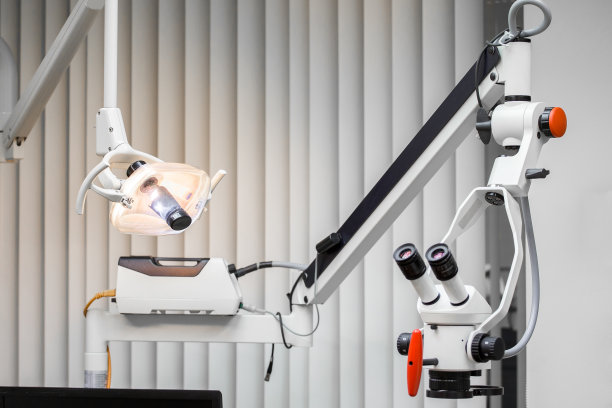Essential Guidelines and Considerations for a Successful Dental Implantation Procedure
Summary: The success of dental implantation procedures hinges on meticulous planning and execution. This article outlines four essential guidelines: preoperative assessments, the surgical process, postoperative care, and the role of continued maintenance. Each aspect is critical in ensuring that implants not only integrate well with the jawbone but also lead to long-term patient satisfaction and health. By adhering to these guidelines, dental practitioners can significantly enhance the outcomes of dental implant surgeries. Understanding these components allows both patients and providers to engage in a collaborative effort toward achieving optimal dental health through successful implantation.
1. Importance of Preoperative Assessments

Before any dental implantation procedure, thorough preoperative assessments are crucial. These evaluations start with a comprehensive dental and medical history review, ensuring that any underlying health conditions are identified. Conditions such as diabetes or autoimmune disorders can impact the healing process and success rate of implants. Therefore, tailoring the treatment approach based on a patients unique health profile is essential.
In addition to medical history, imaging techniques, including X-rays or CT scans, are vital for evaluating bone density and structure. These images guide the dental implant specialist in determining the best locations for the implants and assessing whether there is enough bone to support them. Moreover, 3D imaging can provide a clearer picture of anatomical features that could affect the procedure, making assessments more accurate.
Finally, discussing patient expectations and potential outcomes is another important aspect of preoperative assessments. By maintaining open communication, practitioners can align treatment goals with patient desires, ultimately leading to higher levels of satisfaction post-surgery. It also allows patients to understand the procedure itself, including risks and benefits, enabling informed consent.
2. Navigating the Surgical Process Effectively
The surgical process is the heart of the dental implantation procedure, demanding precision and expertise. The first step involves the administration of anesthesia, which can be local or general, depending on the procedures complexity and the patients comfort level. Effective anesthesia leads to a pain-free experience, setting a positive tone for the entire process.
Once the patient is adequately anesthetized, the surgeon begins with creating an incision in the gum tissue, exposing the bone where the implant will be placed. The implant site must be prepared meticulously, often requiring bone drilling to achieve the correct depth and angle for the implant. Maintaining sterile conditions during this phase is paramount to prevent post-operative infections.
After placing the implant, it is crucial to ensure that its stable in the bone. This may involve securing it with protective caps or suturing the gums for optimal healing. Proper closure reduces the risk of complications and sets the stage for successful osseointegration, the process where the implant becomes part of the jawbone. This foundational stage is critical for the longevity of the implant.
3. Postoperative Care for Long-lasting Results
Postoperative care is an integral aspect that significantly influences the long-term success of dental implants. After the procedure, patients should receive detailed instructions that cover oral hygiene, dietary restrictions, and activity limitations. Patients are often discouraged from consuming hard foods and smoking, both of which could jeopardize healing.
Follow-up appointments should be scheduled to monitor the healing process and address any complications that may arise. During these visits, dentists can assess the condition of the implant, making any necessary adjustments or interventions. Ensuring regular follow-ups fosters a supportive environment for patients and allows for proactive management of potential issues.
Moreover, educating patients on recognizing signs of complications such as excess bleeding, swelling, or infection is beneficial. Prompt detection of these issues can lead to timely treatment, minimizing risks and ensuring a smoother recovery process. Overall, patient engagement in their postoperative care is vital for achieving optimal outcomes.
4. The Role of Continued Maintenance and Check-ups
Continued maintenance of dental implants is essential for their longevity and durability. Regular dental check-ups allow practitioners to monitor the stability of the implant and surrounding tissues. Professional cleanings prevent the build-up of plaque and tartar, essential for maintaining gum health and preventing peri-implantitis, an inflammatory condition that can jeopardize the implant.
Beyond professional maintenance, patients should also commit to a diligent home care routine. This includes brushing and flossing daily, using interdental brushes, and possibly investing in special cleaning devices designed for implant care. A well-rounded oral hygiene regimen not only maintains the health of the implant but also supports overall oral health.
Finally, ongoing education about lifestyle choices and their impact on dental health plays a critical role. Patients should be encouraged to adopt healthy habits, such as a balanced diet rich in vitamins and minerals that foster healing and maintenance. This holistic approach to dental health ensures that the investments made in dental implants pay dividends throughout a patient’s lifetime.
Summary:
In conclusion, the success of dental implant procedures relies on detailed preoperative assessments, efficient surgical processes, robust postoperative care, and continued maintenance. Each aspect contributes to optimal patient outcomes, significantly enhancing both functionality and aesthetics of dental implants. By adhering to these essential guidelines, both dental professionals and patients can ensure a successful dental journey.
This article is compiled by Vickong Dental and the content is for reference only.



